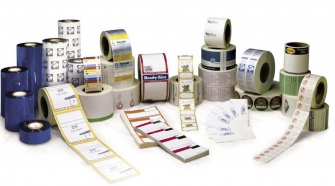There have been numerous scaffolding fires at construction sites over the last year which have put hundreds of lives at risk and caused significant damages. Fire safety is paramount on construction sites considering that they’re among the highest risk workplaces for fires. There are many reasons why construction sites have an increased risk of fires, including:
- Increased risk of trespass, vandalism, and malicious acts
- Presence of flammable materials
- Increased use of flammable and explosive substances like gases
- Incomplete electrical systems
- Work activities that include hot work processes
- The nature of unfinished buildings
The presence of flammable building materials on construction sites not only increases the damage once a fire ignites, but also increases the risks to fire and emergency teams. As a result, fire prevention must be carefully managed on construction sites particularly during the planning stage. To offer you some insight, here are out top tips for preventing scaffolding and construction fires.
- ‘No Fire’ policy
All construction sites must have a ‘No Fire’ policy which prohibits any fires from being started. Workers should only smoke cigarettes in designated areas located away from high-risk zones and cigarette butts should be extinguished carefully. Also, rubbish should never be burned in an attempt to dispose of it.
- Have a plan for waste
All rubbish should be disposed of in designated waste areas so it can easily be contained in a fire does break out. These designated waste areas should have fire and emergency procedures in place. Additionally, waste containers and skips should be located away from the site boundary to minimize the risk of arson.
- Keep the construction site clean
Rubbish and other waste materials are essential fuel for fires so construction sites should be cleaned regularly by disposing of rubbish in designated waste areas. Offcuts, packaging, and pallets should never accumulate as they are an ideal source of fuel for fires.
- Electrical systems
Only qualified and competent electricians should install electrical systems (including temporary supplies) on construction sites. These electrical systems should be regularly maintained and care must be taken with portable electrical equipment, including up-to-date PAT testing and frequent visual checks for faults and damage.
- Temporary heaters
If temporary heaters are used to keep workers warm during cold weather, they must be installed properly and located in a safe position with guards fixed. In addition to this, temporary heaters should always be kept away from any combustible or flammable materials and never be left unattended.
- Lights
Similar to temporary heaters, lights are another source of heat and pose an ignition risk on construction sites. High-intensity discharge (HID) lights are particularly dangerous and should always be kept away from combustible or flammable materials. All lights on construction sites should be securely fixed to minimize the risk of them falling over.
- Hot works
Hot works are arguably the biggest risk of fires on construction sites so it’s vital that anyone performing this type of work activity has a permit. Any rubbish or flammable materials should be removed from the immediate work area and non-removable objects should be covered with a fire retardant blanket. Never underestimate the distance that heat and sparks can travel.
- Fire extinguishers
All construction sites should have a variety of fire extinguishers strategically located in high-risk locations. While they don’t prevent a fire, fire extinguishers are designed to contain and extinguish small fires before they can grow and become an emergency. Keep in mind that different sources of fires require different fire extinguishers, so it’s a good idea to perform yearly fire extinguisher training so all workers are up-to-date.
- Emergency fire procedures
Along with implementing the above control measures, each construction site should have emergency fire procedures which form part of the induction process. All workers should be aware of these emergency fire procedures in conjunction with the location of fire extinguishers, escape routes, and assembly points.
Educating workers on fire safety and prevention is the best way to minimize the risk of fires on construction sites. If you or anyone else notice that fire safety standards are slipping during the course of a construction project, notify management as soon as possible so the appropriate actions are implemented.
If you have any further questions relating to fire safety and prevention on construction sites, don’t hesitate to speak with the friendly team at Uni-Span by phoning 1300 882 825.
















